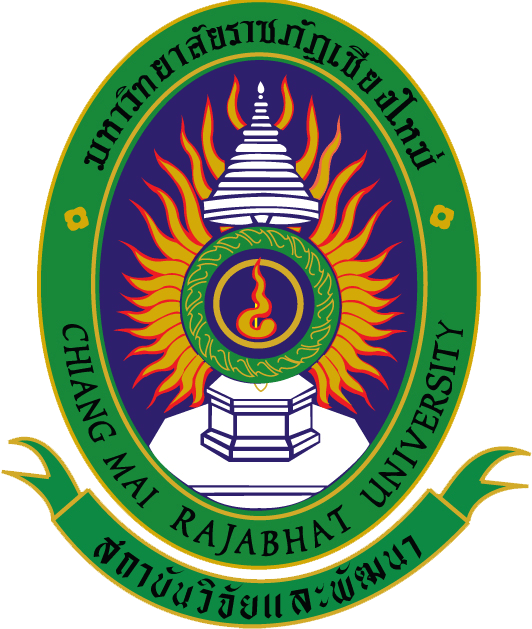
ระบบสารสนเทศงานวิจัย สถาบันวิจัยและพัฒนา มหาวิทยาลัยราชภัฏเชียงใหม่
Research Information System(RIS)
ความหลากหลายทางชีวภาพและความสัมพันธ์กับภูมิปัญญาท้องถิ่นเพื่อการอนุรักษ์และจัดการคุณภาพและปริมาณน้ำในพื้นที่อำเภอเมือง จังหวัดแม่ฮ่องสอน
อาจารย์ ดร.ทัตพร คุณประดิษฐ์
คณะวิทยาศาสตร์และเทคโนโลยี
คำสำคัญ :
เลขทะเบียน :
302-56-SCI-NRCT
บทคัดย่อ
การศึกษาการติดตามตรวจความหลากหลายทางชีวภาพ และการใช้เป็นดัชนีสอบคุณภาพน้ำโดยใช้สิ่งมีชีวิตประกอบไปด้วย สาหร่ายขนาดใหญ่ และแมลงน้ำ ร่วมกับปัจจัยทางกายภาพและเคมีอย่างง่ายในพื้นที่ลุ่มน้ำแม่สะงี จังหวัดแม่ฮ่องสอน ทำการเก็บตัวอย่างจำนวน 4 จุด ทำการศึกษา คือ จุดเก็บตัวอย่างที่ MN1 บริเวณต้นน้ำลำน้ำแม่สะงี จุดเก็บตัวอย่างที่ MN2 บริเวณชุมชนบ้านแม่สะงี จุดเก็บตัวอย่างที่ MN3 บริเวณสะพานบ้านหลิม และจุดเก็บตัวอย่างที่ MN4 บริเวณลำน้ำแม่สะงีหลังจากผ่านถ้ำปลา คุณภาพน้ำซึ่งประเมินคุณภาพน้ำทางชีวภาพ โดยใช้ ASPT, AARL-PC และ AARL-PP Sore สามารถสรุปได้ว่า จุด MY1 จัดเป็นแหล่งน้ำประเภทที่ 2-3 คือคุณภาพน้ำปานกลางค่อนข้างดี จุด MY2 และ MY3 จัดเป็นแหล่งน้ำประเภทที่ 3 คือคุณภาพน้ำประเภทปานกลาง ส่วนในคุณภาพน้ำในลำน้ำยวมพบว่ามีคุณภาพโดยรวมอยู่ในเกณฑ์ปานกลางจากการวิเคราะห์คุณภาพน้ำจากมาตรฐานคุณภาพน้ำในแหล่งน้ำผิวพบว่าแม่น้ำแม่สะเรียงได้จัดอยู่ในประเภทที่ 2-3 ได้แก่การใช้เพื่อการอุปโภคและบริโภคโดยต้องผ่านการฆ่าเชื้อโรคตามปกติและผ่านกระบวนการปรับปรุงคุณภาพน้ำทั่วไปก่อนและการเกษตร ทำการวิจัยอย่างมีส่วนร่วมกับให้กับท้องถิ่นโดยเน้นหนักถึงกลุ่มเยาวชน นักเรียน ครู-อาจารย์ และตัวแทนชุมชน โดยการอบรมเชิงปฏิบัติการ 2 ครั้งในพื้นที่ เพื่อให้ผู้เข้าร่วมสามารถดำเนินการเก็บตัวอย่าง และสามารถนำข้อมูลที่ได้มาสรุปและจัดสร้างเป็นองค์ความรู้ในการใช้สิ่งมีชีวิตติดตามตรวจสอบคุณภาพน้ำในชุมชนแม่น้ำแม่สะงี พบสาหร่ายขนาดใหญ่ที่สามารถใช้เป็นตัวอย่างในการเป็นดัชนีชีวภาพ ทั้งหมด 15 ชนิด และแมลงน้ำทั้งหมดจำนวน 32 ค่าการใช้ สาหร่ายขนาดใหญ่ แพลงก์ตอนพืช และแมลงน้ำ เป็นดัชนีบ่งชี้ความอุดมสมบูรณ์และคุณภาพน้ำของแม่น้ำยวม พบว่ามีความหลากหลายในระดับปานกลางค่อนข้างน้อยเมื่อเทียบกับแหล่งน้ำอื่นในพื้นที่ภาคเหนือ ส่วนการศึกษาองค์ความรู้และภูมิปัญญาท้องถิ่นผ่านการจัดการระบบเหมืองฝาย และพิธีกรรมอนุรักษ์ต้นน้ำ ส่งเสริมให้ชุมชนสามารถติดตามตรวจสอบคุณภาพน้ำด้วยตัวเองได้ต่อไป
Abstract
The Study on Bio-monitoring and Water Resources in Mae Sa Ngee Watershed, Mae Hong Son Province by using aquatic organisms, benthic diatom, macroalgae, phytoplankton and aquatic insects and some physico-chemical technique carried out from September 2008 to March 2010. Seven sampling sites along the Mae Sa Ngee River were chosen including MN1 the origin of Mae Sa Ngee Stream, MN2 Mae Sa Ngee community, MN3 Ban Lim Bridge in Mae La Noi District and Mae Sa Ngee River after Thum Pla Cave, Mae Hong Son Province. The water quality investigation by using ASPT, AARL-PP and AARL-PC Score revealed that the water quality in upper stream (MN1) was classified to moderate to clean and downstream (MN2 to MN3) was classified to moderate water quality. The overall water quality in Mae Sa Ngee was moderate when compared with the standard water quality of Thailand. The water can use for household consumption by common treat and agricultural. This project is including the knowledge transferred to the local people such as student and local citizens. Two workshops were issued in each focused area for communities/school including student, teacher and people in the research areas along the Mae Sa Ngee Stream. After Participatory collection, Fifteen species macroalgae and Thirty two Aquatic insect were found as the bioindicator. The diversity of aquatics organism shown that the Mae Sa Ngee Stream is classified into the moderate to low abundance compared to the other rivers in northern Thailand. The local communities were continuing the local wisdom on the check-dam management and continuing the upstream respecting. The participants were studied for collecting aquatics samples, monitored and evaluated the water quality by themselves. The data from local researcher were transferred to the university researcher for analyzed and evaluated the water quality in the Mae Sa Ngee River. The result by the local researcher shown that the water quality in Mae Sa Ngee River were clean to moderate, and moderate by using the physical, chemical and some biological simple technique. The result from local researcher and the collecting sample by Chiang Mai Rajabhat University staff found that the macroalgae and aquatic insects could be used for water quality indicator and monitor in the Mae Sa Ngee River.
ไฟล์งานวิจัย
อยู่ในระหว่างการปรับปรุงเนื้อหา602 22 ธ.ค. 2560
สำนักงานคณะกรรมการวิจัยแห่งชาติ (วช.)
196 Paholyotin Rd., Chatuchak, Bangkok 10900
0-2561-2445